On September 28, 1999, representatives of dozens of tribes from across the hemisphere gathered on the National Mall for the groundbreaking of the Smithsonian’s National Museum of the American Indian. On the overcast morning, several hundred people packed under three tents during a ceremony that featured blessings from the four cardinal directions. After the ceremony, some audience members sprinkled tobacco on the land and scooped up some of the soil to take home as a souvenir.
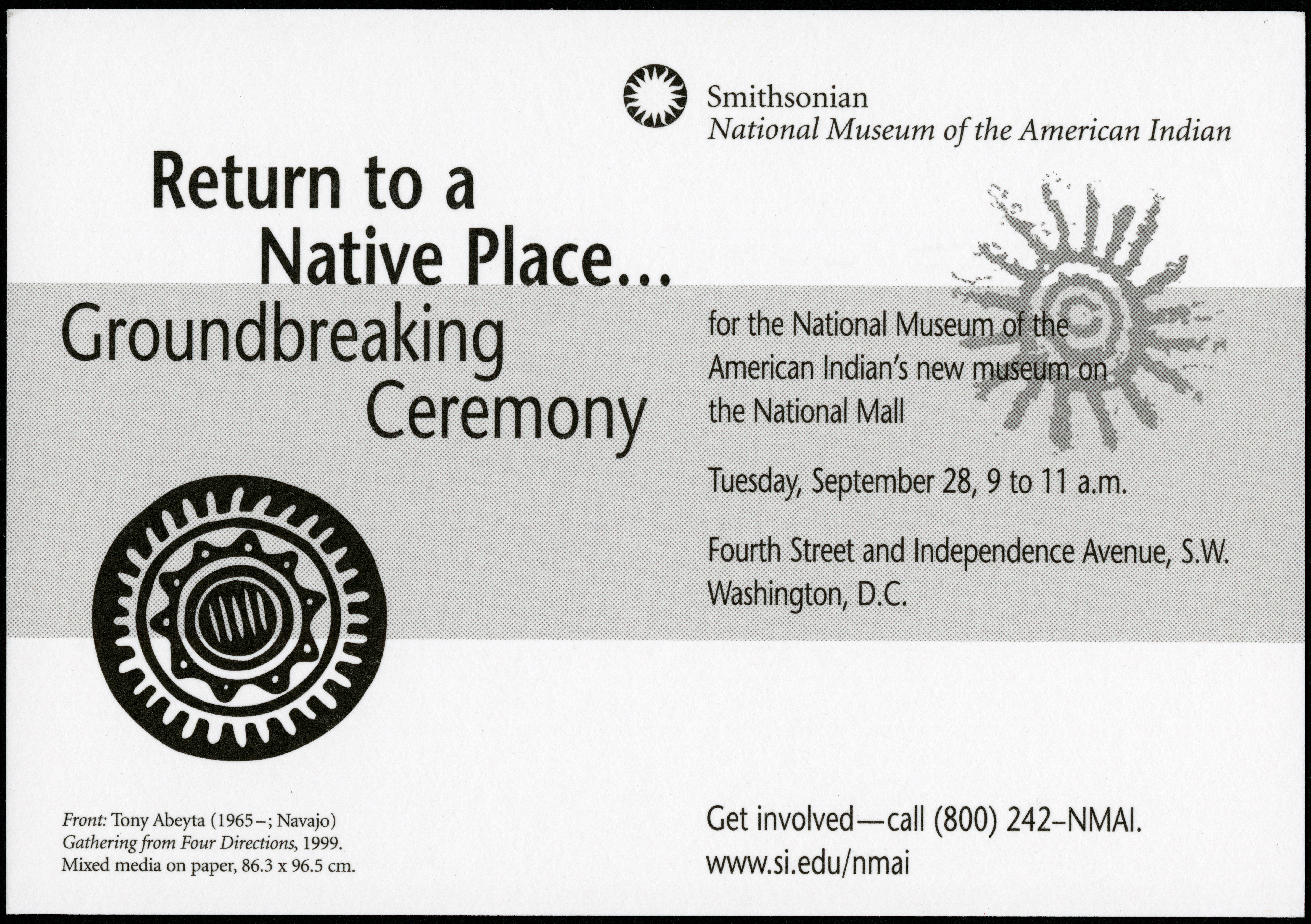
That morning, Allen Pinkham, Sr., a representative of the Nez Perce tribe and a liaison for the U.S. Forest Service, described the importance of the Museum’s emphasis on collaboration and consultation with Native peoples. “The significance of it is, now we can tell our story," he told the Washington Post. "No anthropologist, archaeologist, historian is going to do it for us. That is the significance of this institution. This is the changeover after 500 years of suppression."[1]
One of the organizers behind the groundbreaking ceremony was historian and curator Dr. Gabrielle Tayac, a member of the Piscataway Indian Nation, who joined the Museum staff in 1999. Tayac reflected on what it was like to coordinate the event so early in her time with the Institution during a 2010 oral history interview with American University student Thomas Barreiro for the Smithsonian Oral History Program.
BARREIRO: Could you tell me a little bit about that groundbreaking and what happened there?
TAYAC: Yes, the groundbreaking was pretty much the first thing that I did when I got on to staff. I have a doctorate in sociology and was kind of like more academic and had been involved with organizing kinds of more human rights grassroots things but I got pulled in. The day after I got here the woman who was supposed to be doing all the organizing I think for the opening programs quit. So I got pulled into it. I’m like the whole thing not just who are you going to invite but filling out all the paperwork and for the federal government that’s like a big deal. But on the happier more productive side what we decided to do was to bring in blessing givers from four directions and so we brought in people from the Tapirisat of Canada for Inuit [Inuit Tapirisat of Canada], we brought in blessing givers from Native Hawaii for the West, we brought in people from Pisac in Peru and then we brought in Piscataway for the East.
So that was a really lovely moment. Then the other part of it was we had a panel to talk about what does this mean? Like, what’s the meaning of what needs to be done? What people need to know about native people and about the representation and thinking about that? So that was a while ago but it was a pretty significant moment because even before that the legislation to open the museum was 1989. It took ten years to get to groundbreaking and then took another five years to get to opening. So, it was a lot of work that was done leading up to it where it was still just sort of this theoretical idea, a paper model sitting on a table and then there was the shell of the building but, you know, what’s going to go in it? And is it ever really going to get done? I mean everybody was pretty sure it would get done but it’s still looking from the outside and working years and years for a place that’s not actually physically done and that’s still an idea, was an interesting kind of exercise.
Five years after the groundbreaking, crowds of Native peoples assembled on the National Mall once again, this time for the opening of the new Museum on September 21, 2004. Opening celebrations began with a Native Nations Procession, which included 25,000 Native peoples from the United States, Canada, Central America and South America who walked along the Mall to the entrance of the Museum. What followed was a six-day First Americans Festival and more than 300 special performances.
Footnotes
[1] Linda Wheeler and David Montgomery, “Building a Home for a People's Past; Indians Celebrate Mall Museum's Start,” Washington Post, September 29, 1999.
Related Collections
- National Museum of the American Indian Oral History Interviews, 2010, Record Unit 9627, Smithsonian Institution Archives
Related Resources
- Smithsonian’s National Museum of the American Indian history, Smithsonian Institution Archives
- “Lightning Fast Legislation for the National Museum of the American Indian” by Lisa Fthenakis, The Bigger Picture, Smithsonian Institution Archives
Produced by the Smithsonian Institution Archives. For copyright questions, please see the Terms of Use.

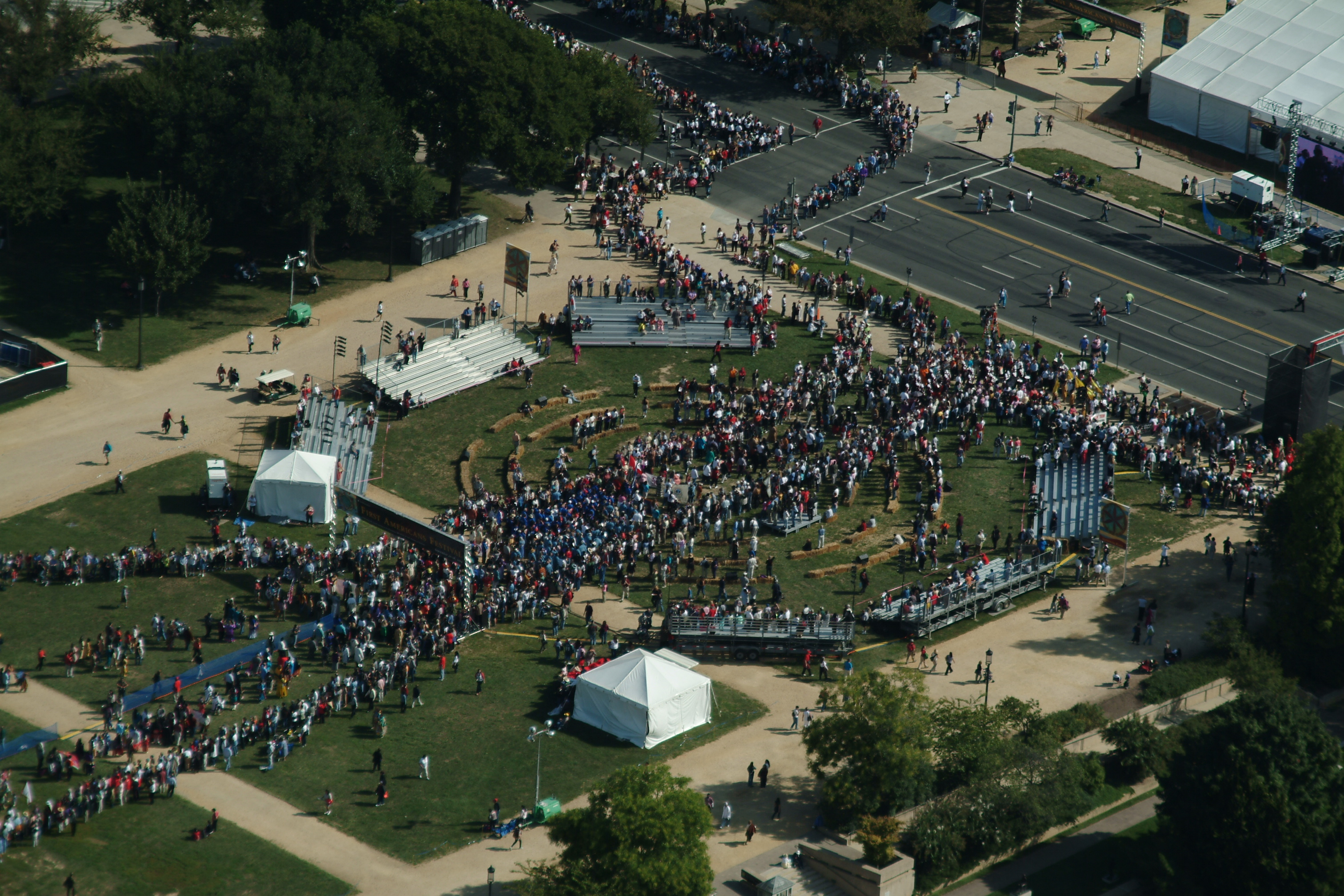
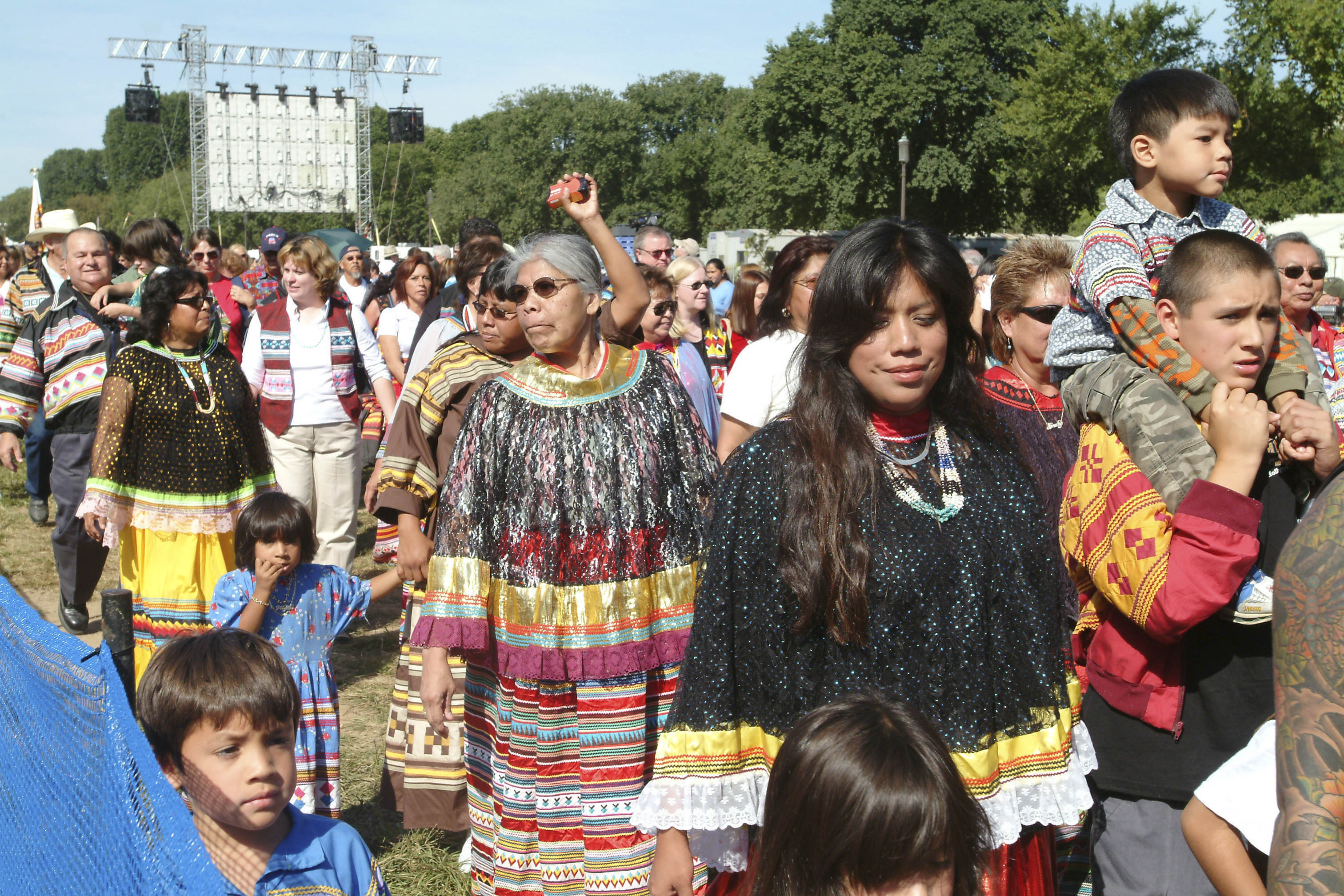

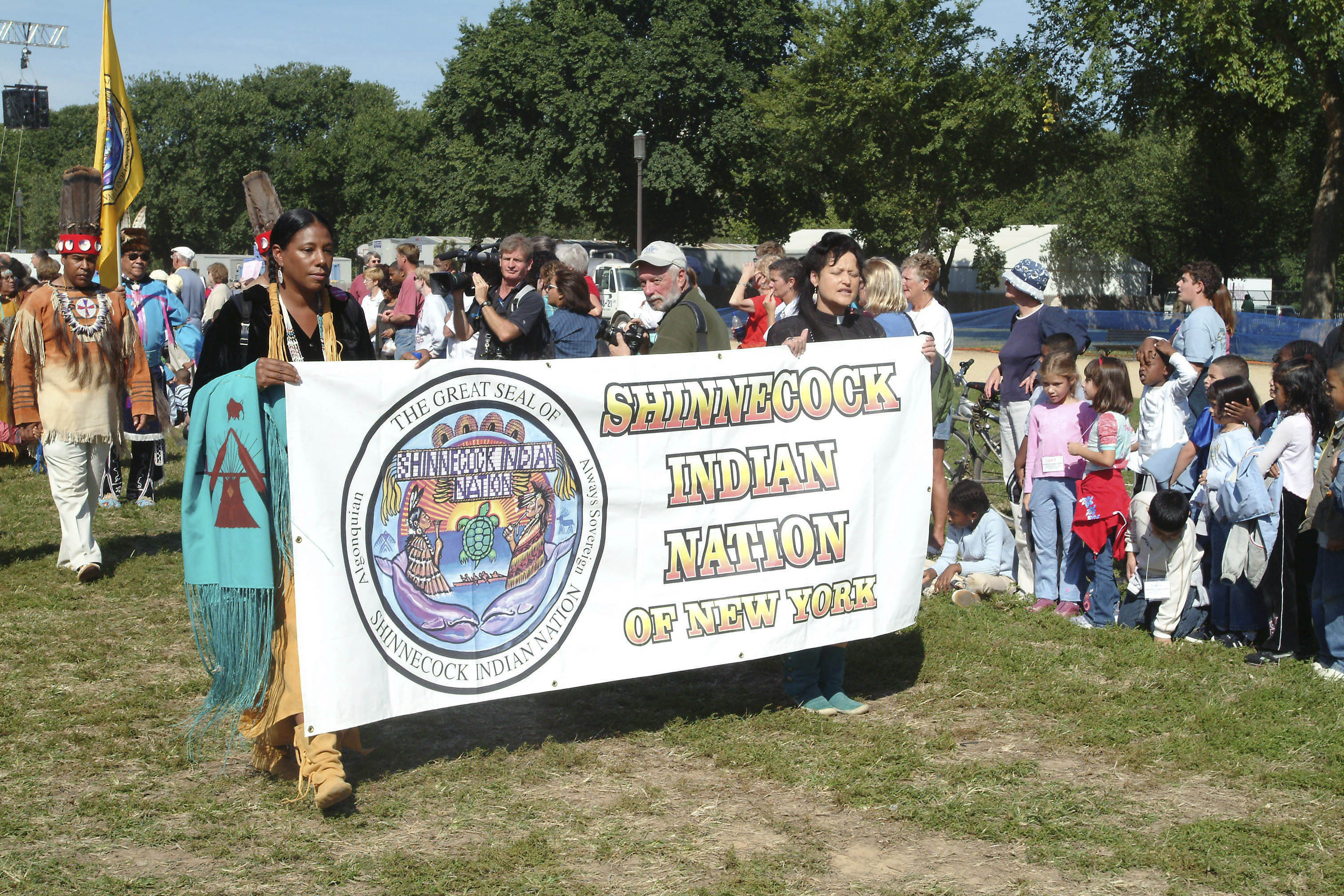


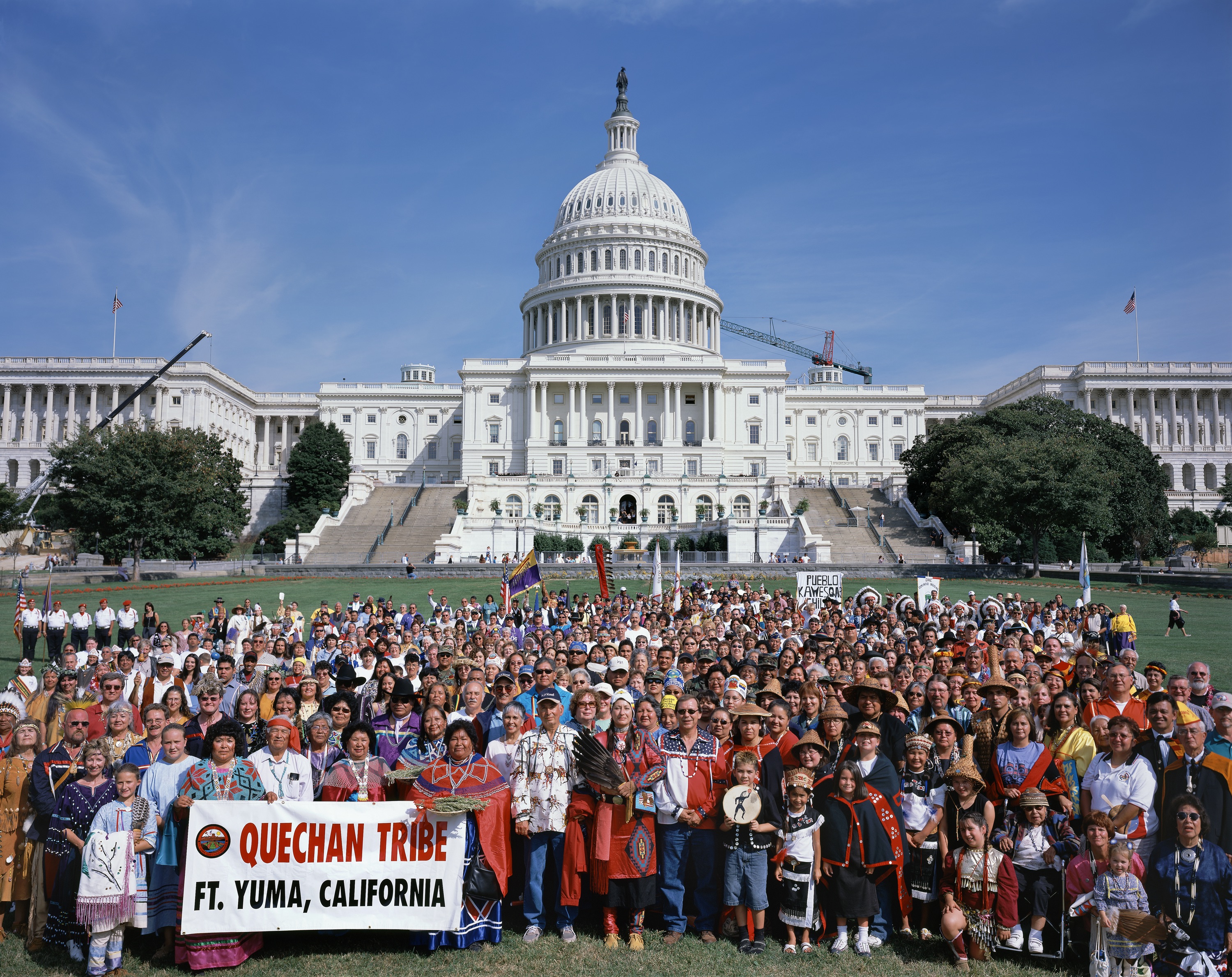
Leave a Comment